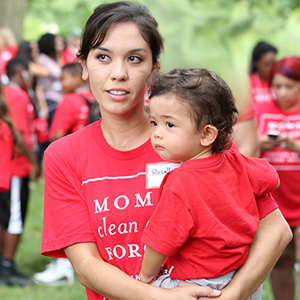
Close to 25 percent of Americans attend school or college every day as students, teachers, staff, faculty and administrators. Usually the focus is on the academics, with sports and after-school activities coming in a close second. Until recently, little thought was given to the actual facility where school was taking place, its air quality, or its use of toxic chemicals, even though kids spend almost as much time there as they do at home. Enter Rachel Gutter, a former teacher who came to the U.S Green Building Council (USGBC) in 2007 to oversee the launch of LEED for Schools, a version of the organization’s popular green certification program that facilitates the design, construction and operation of high-performance green buildings. Rachel stayed on to launch the National Green Schools Campaign.

I caught up with Rachel in Philadelphia at the Women in Green Power Breakfast where she called green buildings, “a transformational tool” whose success will be measured by “the number of minds we change, the number of lives we change.”
“If we start doing that within the classroom…with the classrooms themselves, then our legacy will be this next generation of sustainability natives: students who are fluent in the language of green, who intuitively make decisions to use what they need as opposed to what they can.”
Her goal at the Center for Green Schools is to “put every student in a green school in this generation.” Rachel’s ambitions for those schools are equally inspiring. She believes schools should function as “pedagogical tools that create a playground for inspired learning, that connect students to nature and encourage movement and health and curiosity.” They should also “ensure that every child has the opportunity to learn in a place that is safe, healthy and supports her dreams for a brighter future.” Such aspiration should be a no-brainer. But Rachel has personal experience to the contrary. She went to school in Montgomery County, Maryland, where her mother just retired after more than 20 years of service in the school system. That’s also where her mother sustained permanent respiratory damage as a result of her time in the schools. Unfortunately, what happened to Rachel’s mom continues to happen around the U.S.
“When you look at our schools today you see outdated buildings in need of repairs, burdened with unsafe toxins, dwindling budgets and outdated resources.”
Though parents, school administrators and students themselves are becoming strong advocates for transforming schools into sustainable and healthy places to live, learn, work and play, their task is being made more difficult by opponents in the chemical industry, specifically, the American Chemistry Council (ACC).
“The chemical lobby (ACC) is systematically going after all state and federal commitments to green building. Their most recent target is the state of Ohio, where legislation known as SCR 25 goes after all of the good work the people of Ohio have done to green public buildings across the state. Most notably (and most distressing) is that SCR 25 takes it out on the kids – attempting to dismantle Ohio’s nation-leading green schools program. Next month, we will celebrate the 100th LEED-certified school in the state, with hundreds more on the way. There are more LEED schools in Ohio than in any other state. Over the past several years, Ohio has gone from a state with some of the worst school facilities in the country to a school with some of the best facilities in the country. Why are they attacking Ohio’s green school efforts? Because of a single optional point in the new version of the LEED rating system that incentivizes the use of building products that publish the list of chemicals and other ingredients that they are made with. When we shop at the grocery store, we get to see every ingredient that has gone into the food we buy to feed our families. Not so with buildings. The chemical lobby has worked for years to make sure that you don’t have the right to know what goes into buildings and building products.”
USGBC and the Center for Green Schools has mobilized what Rachel calls a “grassroots army of green builders, teachers, parents and other concerned taxpayers who are working tirelessly to tell state legislators and Ohio Governor Kasich the truth about SCR 25 and who is behind it.” I was curious if consumers – especially “green” moms – in other parts of the U.S. need to worry that their schools might also come under attack. And if so, what can parents and school administrators do to fight back effectively?
“When it comes to their children’s education, my experience is that parents (even green moms) are really focused on the “who” and the “what” (the teachers and the curriculum) but don’t pay much mind to the “where.” We have lots of evidence that our children’s health and performance are significantly impacted by the environments in which they learn. From indoor air quality to daylight to acoustics to thermal comfort, where our students learn really matters. That’s why all parents should be informed advocates for healthy, safe and resource-efficient school environments. Whether it’s telling the chemical lobby to leave the schools in your neighborhood alone (and yes, ACC is going after every state that has a successful green building program) or advocating for the use of green cleaning products in the classroom, we need parents and other school stakeholders to promote healthy, high-performance school environments. By promoting the design and construction of green schools, and by greening the operations and maintenance of existing schools, we can make a tremendous impact on student health, school operational costs and the environment.”
LEARN MORE: Center For Green Schools Why We Need Green Schools




